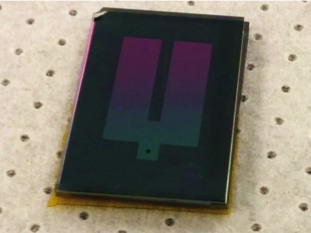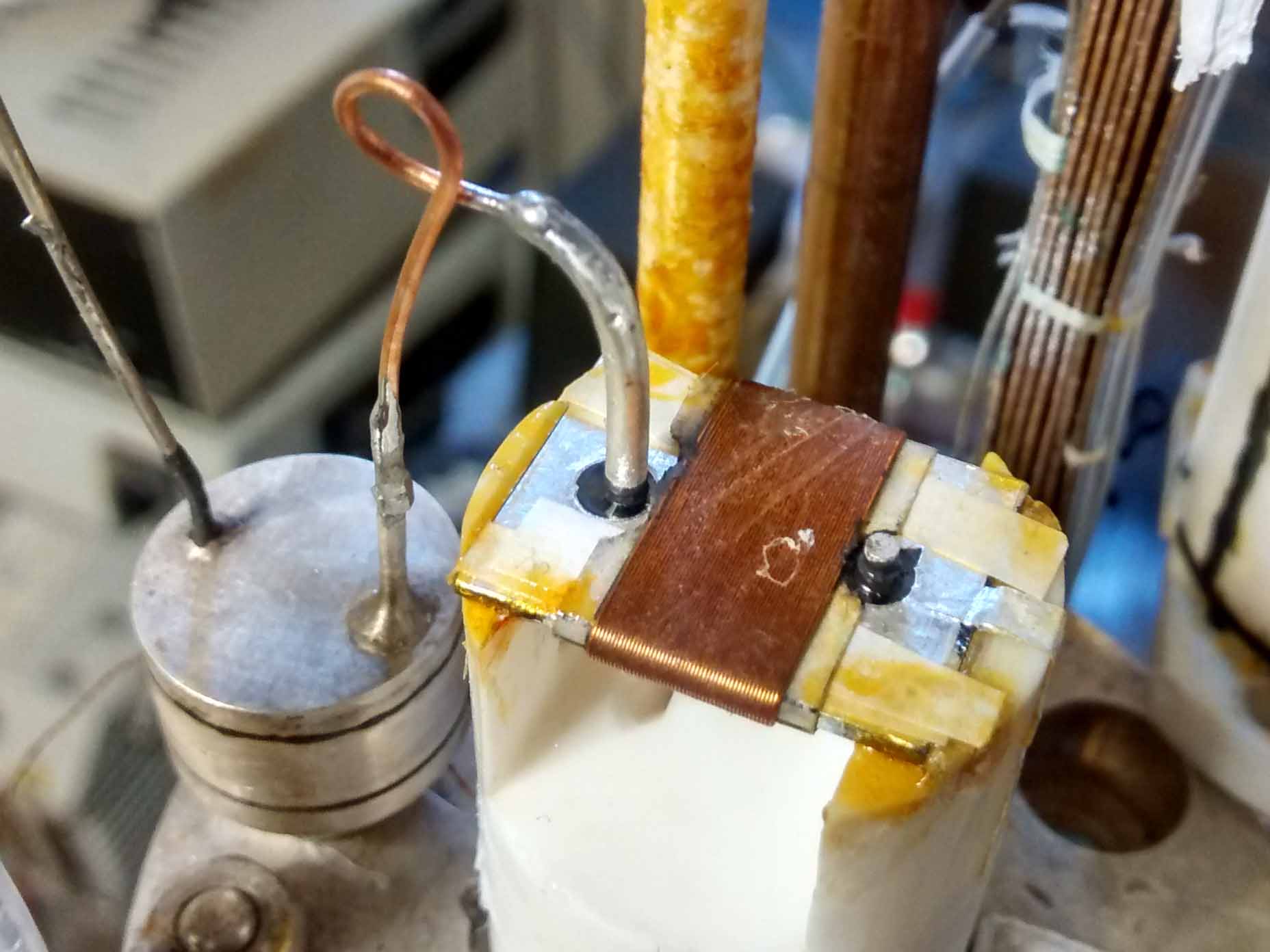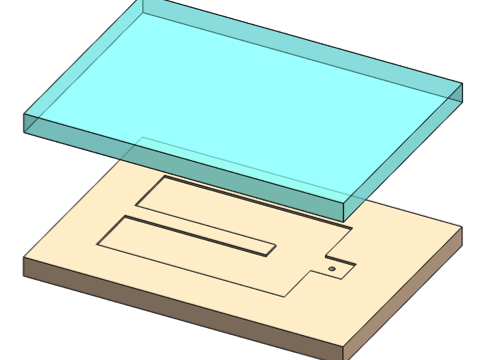
NMR Nanofluidic Slab Geometry

NMR Slab mounted onto the Cryostat

Schematic of Nanofluidic Slab Geometry
Description
Experiments on liquid helium-three near the absolute zero of temperature have played a key role in the development of many central concepts in condensed matter physics. The discovery of superfluid 3He gave us the first p-wave superfluid, a model for unconventional superconductivity, in which the pairing breaks the symmetry of the parent normal metal.
Recently the topology (in momentum space) of condensed matter systems has been widely applied as a powerful scheme for their classification, alongside the concept of broken symmetry. The simple truths of topology (eg a sphere's surface cannot be continuously deformed into that of a torus) have a powerful impact when applied to complex interacting quantum systems, by pointing to phenomena that must be there, independent of microscopic details; robust protection is conferred by the inviolable constraints of topology. In particular it is predicted that at the surface of the quantum vacuum that is the B-phase of superfluid 3He, there exist excitations that are Majorana fermions. Thus the unique condensed matter system that is superfluid 3He potentially unites condensed matter physics and particle physics “in the laboratory”.
In this project, we study the topological superfluidity of helium-three confined in regular nanofabricated geometries, as a model system to further our understanding of topological quantum matter. Our experiments exploit the recent technical breakthroughs we have made in quantum nanofluidics, and the development of sensitive NMR techniques based on the detection of the precessing magnetic signal by SQUIDs (Superconducting Quantum Interference Devices). In addition, we are developing new measuremnt techniques based on superfluid nanomechanical resonators, acoustic transducers and thermal transport.